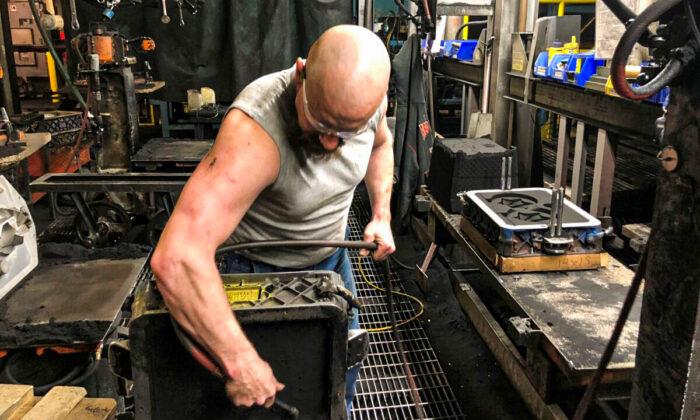Businesses rebuilding their inventories are helping underpin the manufacturing sector, which accounts for 11.9 percent of the economy
Factory orders fell by 0.4 percent in December, while data for November was revised higher, with orders increasing by 1.8 percent instead of the 1.6 percent as previously reported.
Total manufacturing orders increased 16.9 percent in 2021.
Inventory purchases surged at a seasonally adjusted annualized rate of $173.5 billion in the fourth quarter of 2021, the second-largest quarterly increase on record.
Many economists see the potential for inventories to further rise, as inflation-adjusted inventories remain below their pre-pandemic levels, while sales-to-inventory ratios are also low.
Factory inventories climbed 0.3 percent in December.
Inventories contributed 4.90 percentage points to the fourth quarter’s 6.9 percent annualized growth pace.
In December, there was a decrease in orders for computers and electronic products as well as transportation equipment. But orders for machinery, primary metals, and fabricated metal products increased, as did those for electrical equipment, appliances, and components.
Durable-goods orders fell a revised 0.7 percent, slightly stronger than the initial estimate of a 0.9 percent decline.
Orders for nondurable goods were down 0.2 percent for the month.
Shipments of manufactured goods rose 0.4 percent in December, after spiking 0.7 percent in November.
Unfilled orders, meanwhile, rose 0.5 percent after gaining 0.8 percent in November.
The inventories-to-shipments ratio was 1.46, unchanged from November.
The Commerce Department also reported that orders for non-defense capital goods, excluding aircraft, which are seen as a measure of business spending plans on equipment, rose a revised 0.3 percent in December, up slightly from the prior unchanged reading in November.
Shipments of non-defense capital goods, which are used to calculate business equipment spending in the U.S. gross domestic product report, increased 1.3 percent in December.
Business spending on equipment rebounded in the fourth quarter.
U.S. manufacturing growth continued to slow down in January, which saw manufacturing activity fall to a 14-month low amid an outbreak of Omicron cases at the start of the year, according the Institute for Supply Management.
The world economy is expected to slow to 4.3 percent in growth in 2022, after expanding 5.8 percent last year, down from the previous 4.5 percent predicted in October.
U.S. stocks were sharply lower at the end of Feb. 3 due to disappointing earnings reports.





